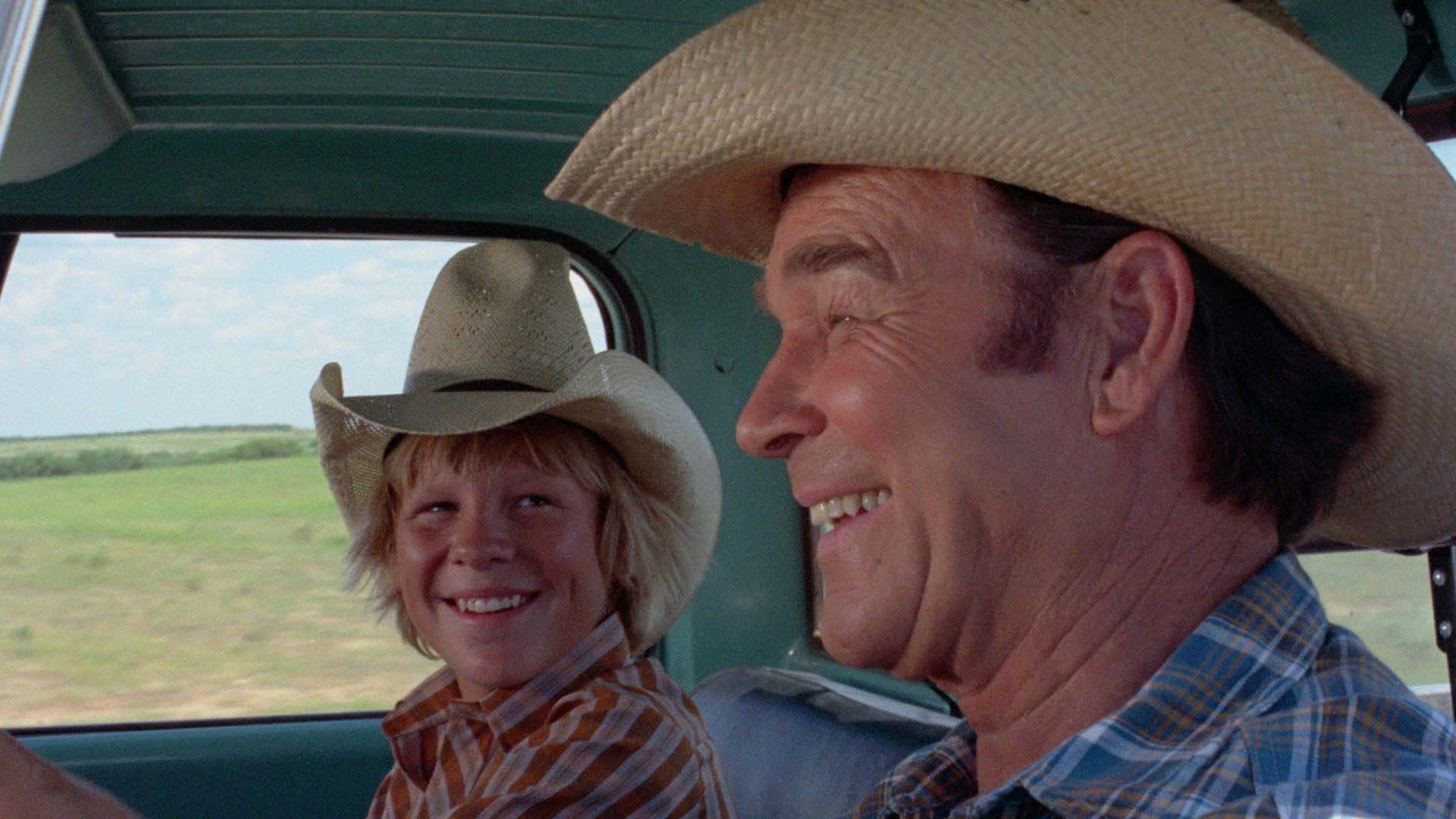« White as Snow | Main | Giallo Essentials - Red Edition »
November 23, 2021
Roy Rogers Double Feature

Under Western Stars
Joseph Kane - 1938

Macintosh and T.J.
Marvin J. Chomsky - 1975
Verdugo Entertainment BD Region A Two-disc set
Verdugo Entertainment has brough together the first film to star Roy Rogers as well as his last. While I acknowledge there is a nostalgia factor that may be at work here, the phenomena of Roy Rogers may be lost on younger viewers. My own discovery took place in the early 1960s when the television series went into syndication and was part of my regular Saturday morning viewing. It never occurred to me that this half-hour series was a peculiar mix of cowboys in rodeo wear, armed with six-shooters, with some of the classic western conflicts of cattle rustling, land rights and such, yet taking place in contemporary times with a comic sidekick driving an undependable jeep. The television series came out between 1951 and 1956. The episodes were essential similar to the movies Rogers starred in, minus the songs.
Which brings up the question, how do you explain the popularity of singing cowboys to a generation that has trouble dealing with the concept of the musical? The sub-genre began with real cowboy songs in 1925 on the radio evolving into newly created songs with big band arrangements. Silent western star Ken Maynard recorded a couple of songs in the late 1920s, and sang a couple songs in one of his early talkies, inspiring other "Poverty Row" studios to initiate their own series with their own stars. Many of these films are easily available on streaming channels. The films mostly played in rural areas, coming to an end when television broadcasting became more widely available.
Roy Rogers was born Leonard Slye, eventually becoming a singer of western songs which in turn led to his getting into the movies. I am not sure if it is accurate to say that Rogers played himself as much as he played a character also named Roy Rogers. Aside from being his first starring role, Under Western Stars offers the opportunity to see the 27 year old Rogers use his past talents that helped him get a foothold as an entertainer, calling a square dance and yodeling. The film is also unusual in that it incorporates a topical theme of dustbowl conditions in the Depression era. Rogers becomes a congressman to help resolve problem stemming from a dam preventing access to water. The song titled "Dust", sung to an audience of Washington D.C. elite, was nominated for an Oscar. This is not The Grapes of Wrath nor does it try to be, but even outside the context of the film's usage, the documentary footage of real dust bowl conditions is still powerful.
Under Western Stars was directed by Joseph Kane, a house director at Republic Pictures whose career spanned several serials, the hour-long features with Rogers, Gene Autry and early John Wayne, eventually making modestly budgeted westerns, adventure films and crime dramas from 1945 through the demise of Republic Pictures. Frequent collaborator, Jack Marta, served as cinematographer. Later in his career, Marta was cinematographer for the neophyte Steven Spielberg on Duel.
Macintosh and T.J, trades the ubiquitous location of so many B-Westerns, California's Alabama Hills for the actual roads and a working ranch in Guthrie, Texas. Rogers plays Macintosh, an itinerant cowboy driving a too old puck-up truck, looking for temporary ranch work. Along the way, he picks up the 14 year old T.J., who is living on his own, keeping the boy from shoplifting an apple. The pair finds work at the very real 6666 Ranch, with Macintosh showing he can still break the wildest of horses, while T.J. does more mundane chores like barn cleaning. The film was rated PG, touching on a variety of things that the classic Roy Rogers movies would never touch including marital infidelity and spousal abuse. In his last film appearance, Rogers seemed to want to be seen as still relevant at a time when Clint Eastwood was nudging the genre away from older conventions. That age was taking its toll on Rogers is most obvious when the film cuts between medium shots from the waist up with long shots of the stunt double doing the actual, and impressive, riding on the bucking horse.
One of the film's unexpected admirers was film critic Rex Reed, with the description of a "heartwarming, lyrical toast to the New West". What has received consensus is the use of songs written by Waylon Jennings, performed by Jennings and Willie Nelson. The cast includes Luke Askew and Billy 'Green' Bush, two actors who appeared in several westerns in the 1970s. The highly respected Joan Hackett plays the wife of Bush, while Andrew Robinson, Clint Eastwood's nemesis in Dirty Harry is a sleazy ranch hand. Director Marvin Chomsky has an odd filmography, winning Emmy awards for Holocaust, Inside the Third Reich and Attica. Chomsky's few theatrical features are mostly forgettable, with Evel Knievel attaining cult status due to the screenplay by John Milius. In retrospect Macintosh and T.J. succeeds in spite of itself, the various individual elements overcoming a storyline that does not always make sense.
The blu-ray also includes the documentary, Exploring the Alabama Hills, Lone Pine, CA., about that familiar location for so many westerns.
Posted by Peter Nellhaus at November 23, 2021 06:25 AM
